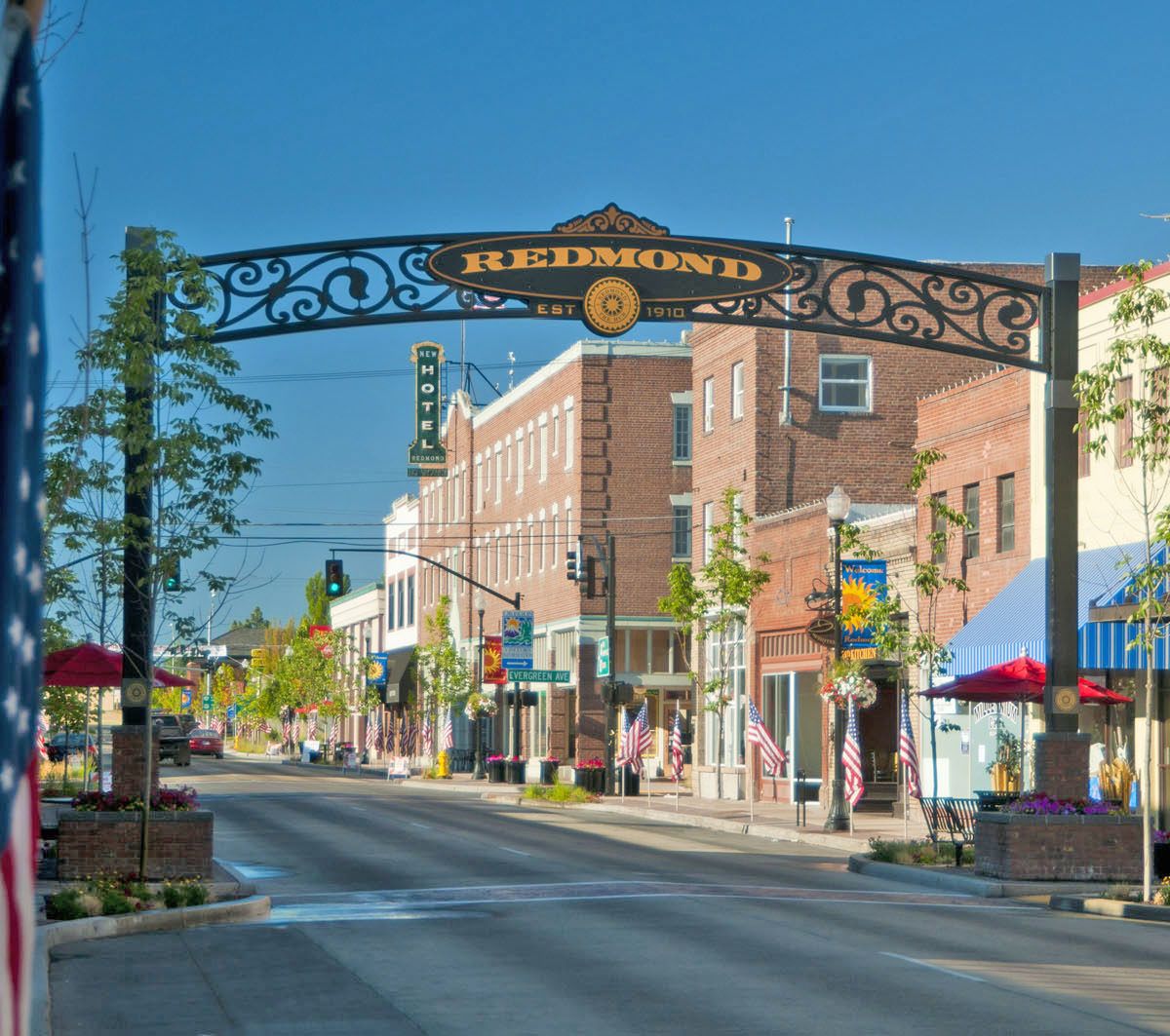Redmond, Oregon Regional Overview
With approximately half the landmass of Bend, yet one-third the population, Redmond has been among the fastest growing communities in Oregon for the past decade. Geographically, Redmond is at the center of the tri-county area (Crook, Deschutes and Jefferson) and consequently, has several unique regional amenities that serve all of Central Oregon. Redmond is home to the region’s commercial airport with direct service via carriers United, Delta, and American to Portland, Seattle, Denver, San Francisco, Salt Lake, and Los Angeles. The Deschutes County Fairgrounds and Expo Center, arguably the nicest in the state, is also located in Redmond. Central Oregon Community College (COCC) has a campus in Redmond that is actively utilized by residents of Crook and Jefferson Counties and is also home to the region’s Manufacturing & Applied Technology Center (MATC), which is a technical training resource for area manufacturers.
Development
With rapid growth has come major capital investments in Redmond. Recent investments include construction of a new $11 million, 37,000 square foot Technical Education Center at Central Oregon Community College’s Redmond campus and the opening of two state of the art K-12 schools – Ridgeview High School and Sage elementary. Hwy 97 has been re-routed at a cost of $70 million and St. Charles Medical Center-Redmond expanded along with construction of over a million square feet of industrial space in the last decade. The City of Redmond has also prepared its infrastructure for the future and has planned, engineered and constructed additional sewer and water capacity, as well as expanded its Urban Growth Boundary to serve residents and businesses for the next 20 years.
From an economic development standpoint, one of the defining attributes of Redmond is its pro-business, solutions-driven approach to business development. For example, it has one of Oregon’s most active and successful rural Enterprise Zones, which offers qualifying businesses 100% property tax exemptions on certain capital investments. In the past decade, 60 projects (companies) have applied for and received this incentive, which has generated 1,038 new jobs. As part of the Redmond Enterprise Zone, the City also offers many local enticements including reduction of sewer and water rates, reduced System Development Charges (SDCs), and reduced or waived permit fees. Affordable industrial land is available from both private and public sectors, which have combined to develop many new industrial/business parks in Redmond. New large-scale projects are emerging on 300+ acres adjacent to the Redmond Airport (a corporate park specializing in green technology tenants, with an executive golf course) and a 900 acre development south of the Fairgrounds and Expo Center for large industrial users and those companies needing access to the Class I railroad mainline that borders this property.
Community
The community could be best characterized by the following phrases: progressive, openly pro-business, blue collar, and focused on creative solutions to maintain and improve its quality of life (including keeping a perpetual inventory of housing affordable for most families). Its “Flag City” status is well-known in the area – hundreds of American flags line the streets on major patriotic holidays, and its many festivals and parades make it feel like typical small town, down-home Americana. Redmond’s history is rooted in agriculture, and a work and civic ethic from these roots that has carried through the generations despite the community’s dramatic economic diversification.
Recreation is important to Redmondites who have easy 30-minute access to downhill and cross country skiing, snowmobiling, and snowshoeing in winter, and waterskiing, fly fishing, big game hunting, sailing, kayaking, rock climbing, hiking, camping, horseback riding, mountain and road biking, ATVing, mountaineering, and most of the region’s 27 golf courses the rest of the year. In fact, with the high desert climate (sunny and little precipitation in valleys), there is little that outdoor enthusiasts can’t do any time of year.
History
The City was named after Frank T. Redmond who, in 1905 had settled the area near the present site of Redmond with his wife Josephine. Five years after that, in 1910, the city was incorporated with fewer than 300 residents. Electrical infrastructure and rail transportation was completed just a year later. By 1930, the town had grown to 1,000 people, and ten years later the population had nearly doubled. The town’s population remained relatively static for the next four decades, growing slowly around a small commercial /retail center and manufacturing industry. However, the 1990s brought population growth exceeding most cities in Oregon. Going into the 21st century, Redmond again doubled its population to over 25,000.
Source: Redmond Economic Development Inc.
